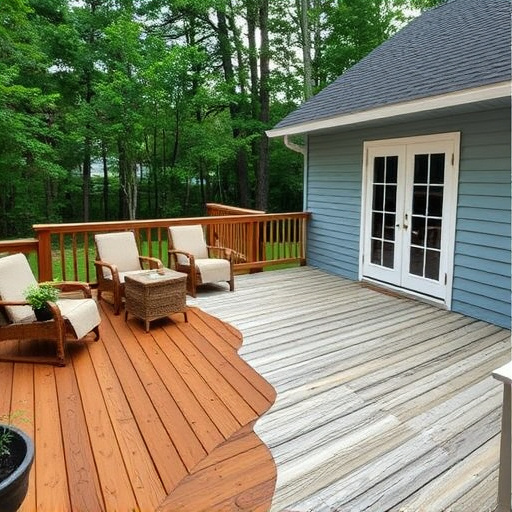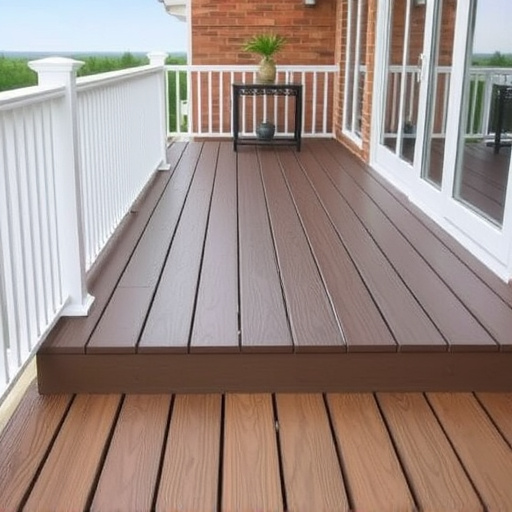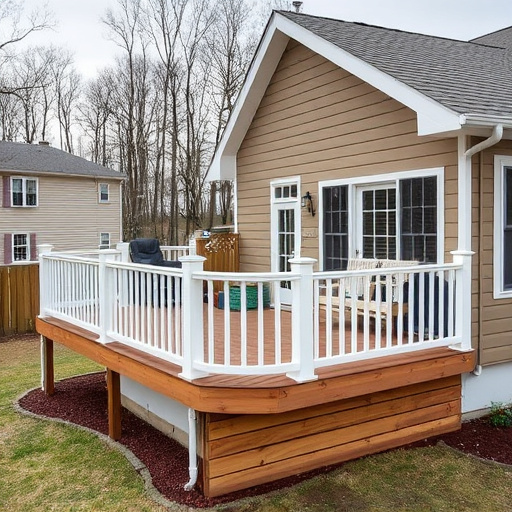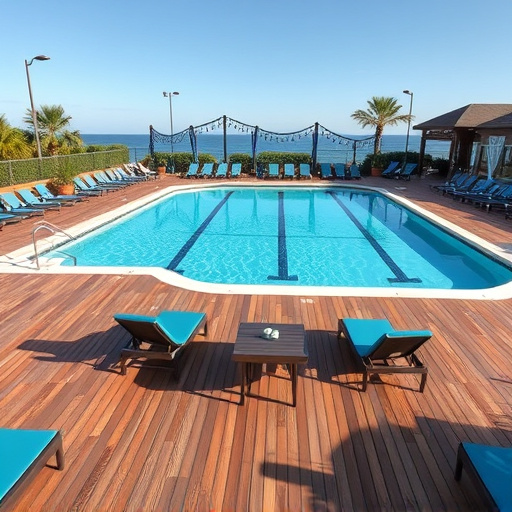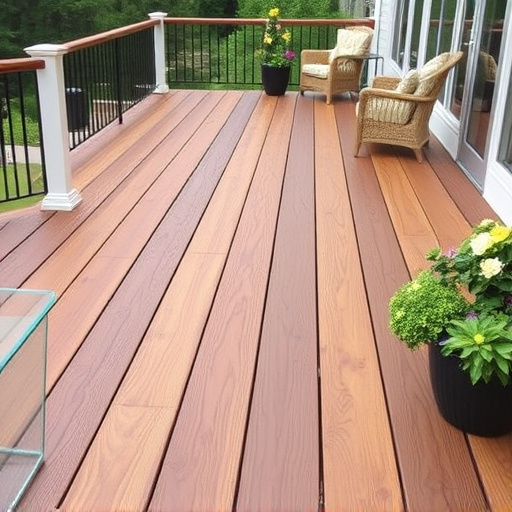Wooden deck stairs offer classic beauty and durability but require regular maintenance. Composite stairs provide low-maintenance longevity with customizable styles. Steel stairs excel in strength and resistance, appealing to DIYers for modern aesthetics. Each material offers unique benefits for diverse preferences and budget considerations in deck stairs installations.
When designing or replacing your deck stairs, material choice is crucial. This guide offers a comprehensive look at the pros and cons of three popular options: wood, composite, and steel. Each possesses unique characteristics that impact durability, maintenance, aesthetics, and budget. Whether prioritizing classic beauty, low-maintenance, strength, or cost-effectiveness, understanding these materials empowers you to select the ideal deck stairs for your space.
- Wood: Classic Beauty, Natural Durability
- Composite: Low Maintenance, Longevity
- Steel: Strength and Sturdiness, Yet Cost-Effective
Wood: Classic Beauty, Natural Durability

Wood has long been a favorite choice for deck stairs, thanks to its classic beauty and natural durability. Its warm, inviting tones seamlessly blend with outdoor spaces, creating an aesthetically pleasing environment that enhances the overall look of your exterior home improvements. Not only does wood offer a visually appealing finish, but it also provides excellent resistance to wear and tear, making it a reliable option for deck stairs that see significant foot traffic. The natural grain patterns and tonal variations add character and charm to any deck, transforming it into a cozy retreat where folks can gather and enjoy the great outdoors.
When properly maintained, wood deck stairs can last for decades, offering both functional and aesthetic benefits. Regular sealing and staining not only protect the wood from the elements but also help preserve its natural beauty. Moreover, wood’s versatility allows for creative designs and custom installations, catering to various preferences and space constraints. Whether you’re looking to enhance your home’s curb appeal or create a functional outdoor living space, wood deck stairs offer an elegant solution that complements a range of exterior home service solutions, from roofing repairs to patio transformations.
Composite: Low Maintenance, Longevity

Composite materials have gained immense popularity for deck stairs due to their remarkable low-maintenance properties and longevity. This makes them an excellent choice for homeowners looking to minimize upkeep while enjoying a durable, long-lasting structure. Unlike wood, composite deck stairs are resistant to rot, decay, and insect damage, eliminating the need for frequent repairs or replacement. They also offer a wide range of colors and styles, allowing for customization to match any exterior home improvements.
Moreover, composite deck stairs perform well in various weather conditions. They don’t expand or contract like wood, ensuring stability and safety throughout all seasons. This durability translates into cost savings over time, as you won’t have to worry about frequent roof replacement or repair, typically required with wooden structures. Their seamless surface also makes cleaning a breeze, further contributing to their low-maintenance allure.
Steel: Strength and Sturdiness, Yet Cost-Effective

Steel offers an excellent combination of strength and sturdiness when it comes to deck stairs, making it a popular choice among homeowners looking for durable and reliable outdoor structures. Its structural integrity ensures that your deck stairs can withstand heavy foot traffic and extreme weather conditions, providing long-lasting performance. This material’s resistance to rot, rust, and warping further adds to its longevity, which is particularly beneficial in regions with varying climates. Moreover, steel deck stairs are relatively easy to install, requiring minimal tools and expertise, making them an attractive option for DIY enthusiasts or those seeking affordable home service solutions.
While steel provides exceptional strength, it may not be the most budget-friendly choice for all projects. However, considering its durability and low maintenance requirements, the initial investment can be seen as a long-term cost-effective solution, especially when compared to other materials like wood that may need frequent replacement or repairs. Unlike some decking materials, steel doesn’t require regular painting or sealing, contributing to time and money savings in the long run, as well as providing an attractive, modern aesthetic for your outdoor space, complementing contemporary roofing solutions.
When choosing materials for your deck stairs, consider your lifestyle, budget, and desired maintenance level. Wood offers classic beauty and natural durability but requires more upkeep; composites provide low maintenance and longevity; while steel guarantees strength, sturdiness, and cost-effectiveness. Each option has its pros and cons, so select the best fit for your unique needs, ensuring your deck stairs are safe, functional, and aesthetically pleasing.







